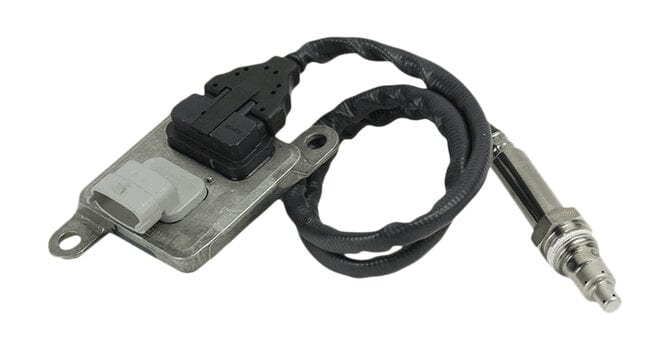
Car nitric oxide sensor: purpose, device, malfunctions
Content
The list of equipment of a modern car includes a large number of additional equipment that provides maximum comfort for the driver and passengers, and also makes the car safer at different speeds. But tightening environmental standards, especially for diesel vehicles, is forcing manufacturers to equip their models with additional equipment that provides the power unit with the cleanest possible exhaust.
Among such equipment is a urea injection system. We have already spoken about it in detail. in another review... Now we will focus on the sensor, without which the system will not work, or will function with errors. Let's consider why a NOx sensor is needed not only in a diesel, but also in a gasoline car, how it works, and how to determine its malfunction.
What is a car nitric oxide sensor?
Another name for a nitrogen oxide sensor is a lean mixture sensor. A car enthusiast may not even know that his car can be equipped with such equipment. The only thing that can indicate the presence of this sensor is the corresponding signal on the dashboard (Check Engine).

This device is installed near the catalyst. Depending on the modification of the power plant, there may be two such sensors. One is installed upstream of the catalytic analyzer and the other downstream. For example, the AdBlue system often works with just two sensors. This is necessary in order for the exhaust to have a minimum nitrogen oxide content. If the system malfunctions, the vehicle will not meet the environmental standards stated by the manufacturer.
Most gasoline engines with a distributed fuel injection system (other modifications of fuel systems are described in another review) get another sensor that records the amount of oxygen in the exhaust. Thanks to the lambda probe, the control unit regulates the air-fuel mixture depending on the load on the power unit. Read more about the purpose and principle of operation of the sensor. here.
Purpose of the device
Previously, only a diesel unit was equipped with direct injection, but for a modern car with a gasoline engine, such a fuel system is no longer a wonder. This injection modification allows a number of innovations to be introduced into the engine. An example of this is the system for shutting down multiple cylinders at minimum loads. Such technologies not only allow to provide maximum fuel economy, but also to remove the highest efficiency from the power plant.
When an engine with such a fuel injection system is operating at minimum load, the electronic control forms a lean mixture (minimum oxygen concentration). But during the combustion of such a VTS, the exhaust contains a large amount of toxic gases, including nitrogen oxide and carbon oxide. As for carbon compounds, they are neutralized by a catalyst (about how it works and how to determine its faults, read separately). However, nitrogenous compounds are much more difficult to neutralize.
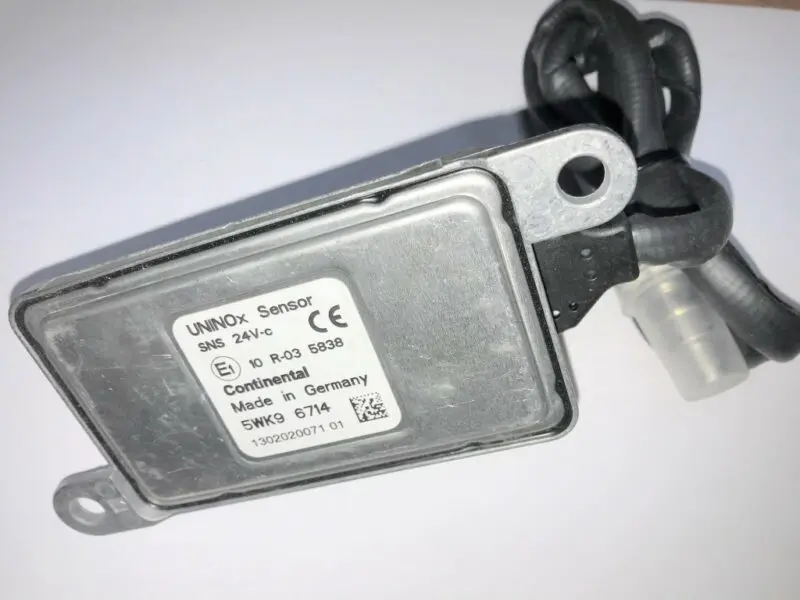
The problem of a high content of toxic substances is partly solved by installing an additional catalyst, which is of a storage type (nitrogen oxides are captured in it). Such containers have a limited storage capacity and the NO content must be recorded to keep the exhaust gases as clean as possible. This task is just for the sensor of the same name.
In fact, this is the same lambda probe, only it is installed after the storage catalyst in the case of a gasoline unit. The exhaust system of a diesel vehicle has a reduction catalytic converter and a measuring device is installed behind it. If the first sensor corrects the BTC composition, then the second affects the exhaust gas content. These sensors are included in the mandatory configuration of the selective catalytic reduction system.
When the NOx sensor detects an increased content of nitrogenous compounds, the device sends a signal to the control unit. A corresponding algorithm is activated in the microprocessor, and the necessary commands are sent to the actuators of the fuel system, with the help of which the enrichment of the air-fuel mixture is corrected.
In the case of a diesel engine, the corresponding signal from the sensor goes to the control of the urea injection system. As a result, a chemical is sprayed into the exhaust stream to neutralize the toxic gases. Gasoline engines simply change the composition of the MTC.
NOx sensor device
Sensors that detect toxic compounds in exhaust gases are complex electrochemical devices. Their design includes:
- Heater;
- Pumping chamber;
- Measurement chamber.
In some modifications, the devices are equipped with an additional, third, camera. The operation of the device is as follows. The exhaust gases leave the power unit and go through the catalytic converter to the second lambda probe. A current is supplied to it, and the heating element brings the temperature of the environment to 650 degrees or more.
Under these conditions, the O2 content decreases due to the effect of the pumping current, which is created by the electrode. Entering the second chamber, nitrogenous compounds decompose into safer chemical elements (oxygen and nitrogen). The higher the oxide content, the stronger the pumping current will be.
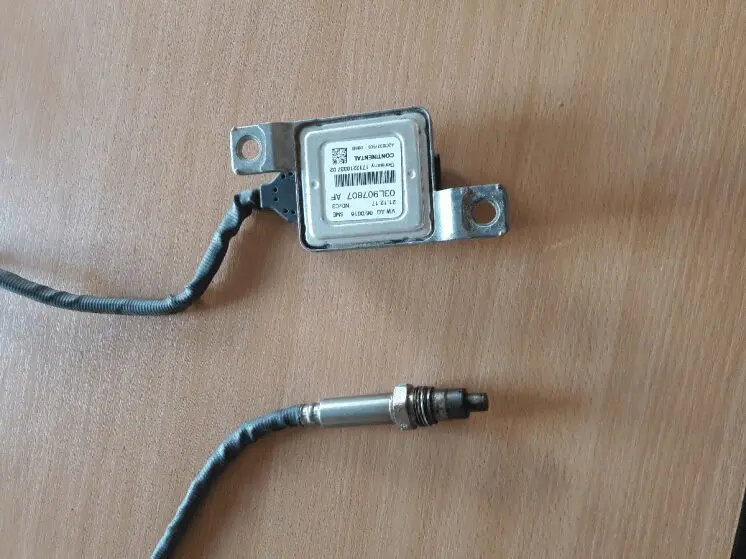
The third camera, which is present in some sensor modifications, adjusts the sensitivity of the other two cells. In order to neutralize toxic substances, in addition to exposure to current and high temperature, electrodes are made of precious metals, which can also be found in the catalyst.
Any NOx sensor also has at least two mini pumps. The first captures the excess oxygen in the exhaust, and the second takes a control portion of gases to determine the amount of oxygen in the flow (it appears during the decomposition of nitrogen oxide). Also, the meter is equipped with its own control unit. The task of this element is to capture the sensor signals, amplify them and transmit these impulses to the central control unit.
The operation of the NOx sensors for a diesel engine and for a gasoline unit is different. In the first case, the device determines how efficiently the reduction catalyst works. If this element of the exhaust system ceases to cope with its task, the sensor begins to register too high a content of toxic substances in the exhaust gas stream. A corresponding signal is sent to the ECU, and the engine marking or the Check Engine inscription lights up on the control panel.
Since a similar message appears with other malfunctions of the power unit, then before trying to repair something, you need to carry out computer diagnostics at a service center. In some vehicles, the self-diagnosis function can be called up (how to do this, see separately) to find out the error code. This information is of little help to the average motorist. If there is a list of designations, in some car models the control unit issues the corresponding code, but in most cars only general information about malfunctions is displayed on the on-board computer screen. For this reason, if there is no experience in performing such diagnostic procedures, then repairs should be done only after visiting the service station.
In the case of gasoline engines, the sensor also sends a pulse to the control unit, but now the ECU sends a command to the actuators so that they correct the BTC enrichment. The catalytic converter alone cannot eliminate nitrogenous compounds. For this reason, the engine can only emit cleaner exhaust gases if the petrol injection mode is changed so that it burns properly.
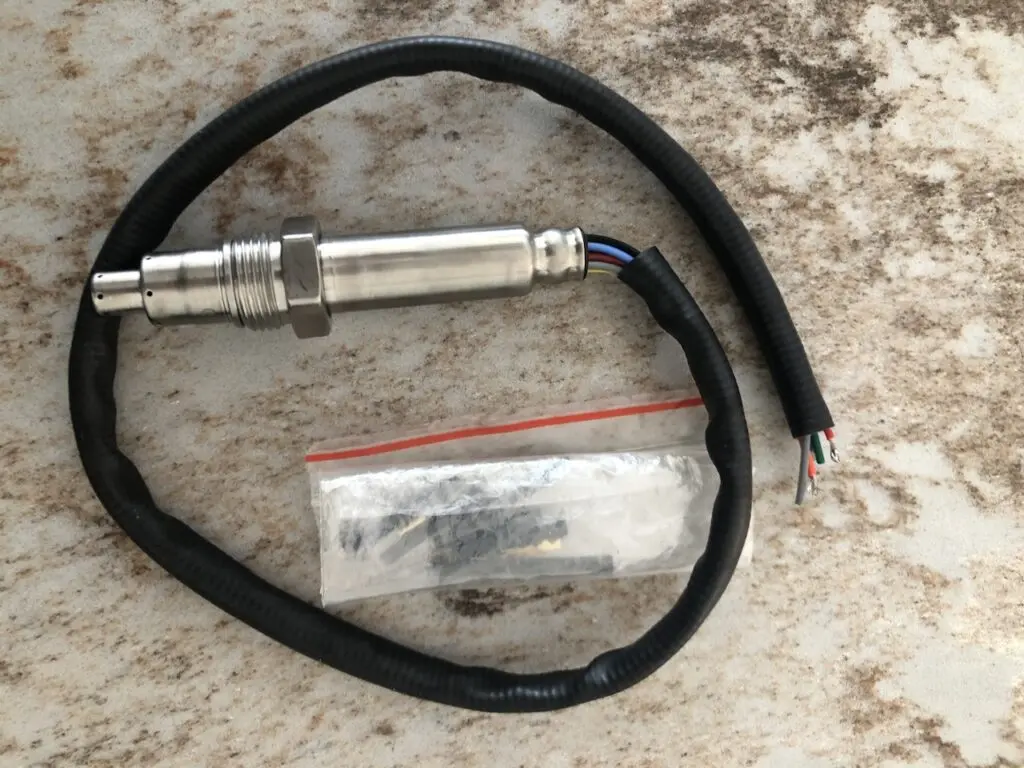
The catalyst can cope with a small amount of toxic substances, but as soon as their content increases, the sensor initiates a better combustion of the air-fuel mixture so that this element of the exhaust system can "recover" a little.
A separate issue concerning this sensor is its wires. Since it has a complex device, its wiring also consists of a larger number of wires. In the most advanced sensors, the wiring can consist of six cables. Each of them has its own markings (the insulating layer is colored in its own color), therefore, when connecting the device, it is necessary to observe the pinout so that the sensor works correctly.
Here is the purpose of each of these wires:
- Yellow - minus for the heater;
- Blue - positive for the heater;
- White - pump current signal wire (LP I +);
- Green - pump current signal cable (LP II +);
- Gray - signal cable of the measurement chamber (VS +);
- Black is the connecting cable between cameras.
Some versions have an orange cable in the wiring. It is often found in the pinout of sensors for American car models. This information is more needed by the service station workers, and for an ordinary motorist it is enough to know that the wiring is not damaged and the contact chips are well connected to the contacts of the control unit.
Malfunctions and their consequences
A working nitric oxide sensor not only provides more environmentally friendly emissions, but also to some extent reduces the gluttony of the power unit. This device allows you to fine-tune the operation of the internal combustion engine at low loads. Thanks to this, the engine will use the minimum amount of fuel, but at the same time the air-fuel mixture will burn as efficiently as possible.
If the sensor fails, then it will transmit a signal too slowly or this pulse will be very weak, even at the exit from the device control unit. When the ECU does not register a signal from this sensor or this impulse is too weak, the electronics goes into emergency mode. In accordance with the factory firmware, an algorithm is activated, in accordance with which a more enriched mixture is supplied to the cylinders. A similar decision is taken when the knock sensor fails, which we talked about. in another review.
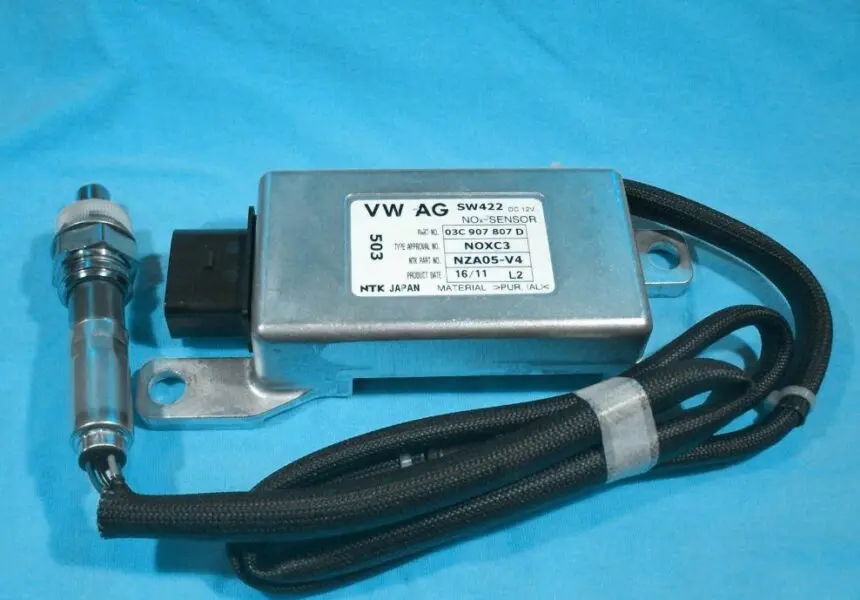
In emergency mode, it is impossible to achieve the maximum efficiency of the motor. In many cases, an increase in fuel consumption is observed in the range of 15-20 percent, and even more in urban mode.
If the sensor is broken, then the storage catalyst starts to work incorrectly due to the fact that the recovery cycle is broken. If the car is tested for compliance with environmental standards, then the replacement of this sensor is mandatory, since due to the incorrect operation of the neutralization system, a large amount of toxic substances is released into the environment, and the car will not pass the control.
As for diagnostics, it is not always possible to recognize a breakdown of an advanced sensor by a specific error code. If you focus only on this parameter, then you will have to change all the probes. A more accurate determination of the malfunction is possible only at the service center using computer diagnostics. For this, an oscilloscope is used (it is described here).
Selecting a new sensor
In the auto parts market, you can often find budget spare parts. However, in the case of nitrogen oxide sensors, this cannot be done - original goods are sold in stores. The reason for this is that the device uses expensive materials that provide a chemical reaction. The cost of cheap sensors will not drastically differ from the cost of the original.
However, this does not prevent unscrupulous manufacturers from trying to forge even such expensive equipment (the price of the sensor may be the same as the overall parts of the car, for example, the body panel or windshield in some car models).
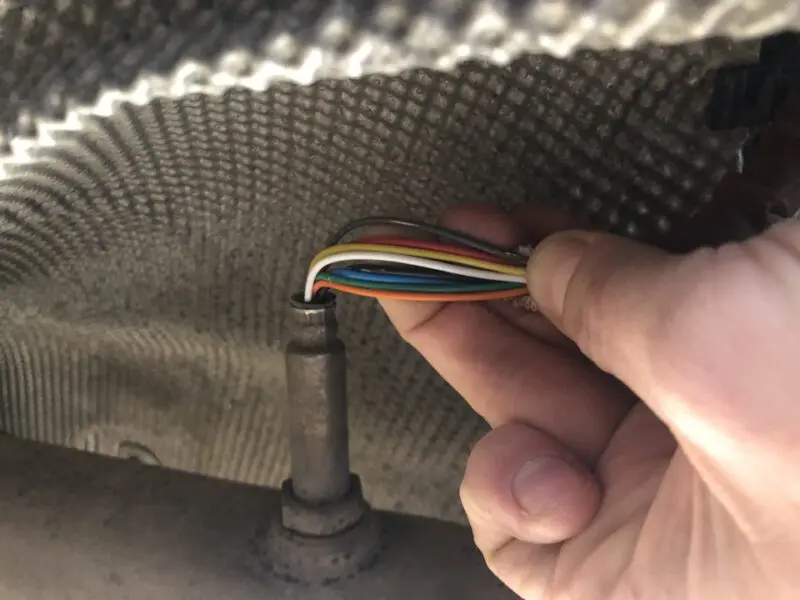
Outwardly, the fake is no different from the original. Even product labels may be appropriate. The only thing that will help to recognize a fake is the poor quality of the cable insulation and contact chips. The board on which the control unit and the contact chip are fixed will also be of worse quality. On this part, the fake will also lack thermal, moisture and vibration insulation.
It is best to purchase products from well-known manufacturers, for example, Denso and NTK (Japanese manufacturers), Bosch (German products). If the selection is carried out according to the electronic catalog, then it is better to do this through the VIN-code. This is the easiest way to find the original device. You can also search for products by sensor code, but in most cases this information is not known to the average motorist.
If it is not possible to find the goods of the listed manufacturers, you should pay attention to the packaging. It may indicate that the buyer has OEM products sold by the packaging company. Often the packaging will contain the goods of the listed manufacturers.
Many motorists ask the question: why is this sensor so expensive? The reason is that precious metals are used in the manufacture, and its work is associated with high accuracy measurement and a large work resource.
Hack and predictor Aviator
So, the nitrogen oxide sensor is one of the many electronic devices without which no modern car works. If such equipment fails, the motorist will have to seriously spend money. Not all service stations will be able to correctly diagnose its malfunctions.
Despite the high cost of diagnostics, the complexity of the device and the subtlety of work, the NOx sensor has a long resource. For this reason, motorists are rarely faced with the need to replace this equipment. But if the sensor is broken, then you need to look for it among the original products.
Additionally, we offer a short video about the operation of the sensor discussed above:
Questions and answers:
What does a NOx sensor do? This sensor detects nitrogen oxides in the vehicle's exhaust gases. It is installed on all modern cars so that the transport meets environmental standards.
Where is the NOx sensor located? It is installed near the catalyst so that the control unit can adjust the operation of the engine for better fuel combustion and neutralization of harmful substances in the exhaust.
Why is NOx dangerous? Inhalation of this gas is harmful to human health. A substance concentration above 60 ppm causes a burning sensation in the lungs. Lower concentrations cause headaches, lung problems. Deadly in high concentration.
What is NOX? This is the collective name for nitrogen oxides (NO and NO2), which appear as a result of a chemical reaction accompanied by combustion. NO2 is formed on contact with cold air.
